Research compiled from a number of leading sources points to some critical key headlines, including:
Internal communications helps drive organizational financial performance and other key business results, and enhances organizational reputation.There’s a correlation between effective internal communications on topics the CEO is best prepared to address, such as explaining business conditions and challenges, providing information on organizational performance and financial objectives, superior financial performance and employee engagement.Belief in senior leadership is one of the strongest drivers of employee engagement in multiple studies (and the very top driver in at least one), and there’s a correlation between confidence in senior leadership and employee agreement that senior leaders communicate well.Trust in senior leadership is a significant variable in employee engagement – and there’s much ground to be regained by CEOs on this front (especially since they are not seen as the most trustworthy information source on almost any of the topics most important to employees).Get Started for FREE
Sign up with Facebook Sign up with X
I don't have a Facebook or a X account

 Your new post is loading... Your new post is loading...
 Your new post is loading... Your new post is loading...
Ruth Malloy is global managing director of the Hay Group Leadership and Talent practice, where she works with Fortune 500 companies to help them achieve their strategies. I've asked her to guest blog about the positive behaviors exhibited by employees in an emotionally intelligent workplace. Here's what she had to say. "If you’re reading this column, you probably know intuitively that Emotional and Social Intelligence are important leadership qualities when it comes to building loyal, motivated teams and retaining good people. Still, when speaking with skeptical colleagues or business leaders, it’s helpful to be able to illustrate how these essential qualities enhance loyalty, motivation and retention in a business organization. My company, Hay Group, works with leaders around the world to help them create measurable results in their organizations. And we have seen over and over that employees generally leave a company for one of two reasons: 1. their immediate manager, or 2. the lack of opportunity to develop and grow. Leaders need both Emotional Intelligence (which includes qualities of self awareness and managing oneself) as well as Social Intelligence (social awareness and managing relationships with others) to engage and motivate employees effectively. To illustrate this point, let’s look at two actual managers (their identities disguised), as described by their reports. 1. Boss A (Best Boss) Takes an active interest in me, listens to my perspectives and concernsIs self-aware; open to feedback, has a sense of humor about himself – comes across as genuineInspires me around the goals of our organization; lays out a vision that I find consequential and energizing.Provides feedback and support in a way that is encouraging and helpful; empowers meHas a positive outlook, even tempered – even under stress2. Boss B (Worst Boss) Has his own agenda, keeps information to himselfVolatile, unpredictableCritical – any feedback is negativeGoals or vision tend to be around numbers versus a meaningful purposeDoesn’t listen well, is not really interested in my perspective or inputTakes all the credit, doesn’t acknowledge team contributionsBoth these actual bosses were very smart people, with excellent ideas and energy and a potentially bright future within their organization. The key differences between their behavior and interactions with others were in the competencies of Emotional and Social Intelligence: self-awareness, emotional self-control, apositive outlook, empathy, inspirational leadership and a willingness and ability to coach and mentor promising employees. How did they do? Everyone wanted to work for Boss APeople tolerated Boss B – but over time, the high potentials working for him typically left.The results of a Hay Group 2010 study of data on more than 4,000 individuals from some 280 organizations support this anecdotal example, demonstrating that strengths in EI team and SI are strongly correlated to positive team climates (you can get the full report here): Of the leaders that demonstrated more competencies in EI and SI, 92 percent created a positive climate (energizing and high-performance). None of them created a de-motivating climate.By contrast, only 22 percent of the leaders who showed few competencies in EI and SI created a positive climate, while 78 percent created a de-motivating climate.In short, emotional and social intelligence are at the very heart of a leader’s ability to create the kind of positive climate that inspires loyalty and motivates performance."
Linda Holroyd's insight:
This blog will help you become a better boss, and think about your own aptitude for social and emotional intelligence.
Based on how the human mind actually thinks and reasons, the authors have developed a five-step approach to thinking in new boxes:
Linda Holroyd's insight:
Great thoughts for thinking differently
Not surprisingly, Joseph Badaracco has written an essential read for leaders of all kinds. The Good Struggle addresses the question of how to lead successfully and responsibly in our uncertain, high pressure, turbulent world.
Linda Holroyd's insight:
Love the conclusion - “If the purpose of life we ease and comfort, no sensible person would take on the demands of leadership"
It takes more than three skills to succeed, but there are three that will make you pretty important in any organization. COMMUNICATION From Moneyball: “If you’ve got a dozen pitchers, you need to speak 12 different languages." Effectively communicating throughout your organization is a vital building block that can lead to great success. If you get in the habit of listening and asking questions to make sure you accurately understand the issues you will be more aware of what you need to do and what you do not need to do. Good communicators "seek first to understand, then to be understood." But let’s not get lost in the Stephen Covey quote. Take it for granted that it is always your responsibility to understand and be understood. It takes a bad communicator to decide that someone else is a ‘bad communicator.’ COLLABORATION From Moneyball: “Stop solving the same problems the same way.” Good communication skills are essential for collaboration. Collaborators network, coordinate, and they cooperate — which all can be defined as different levels of resource sharing, but they also want to make each other stronger by participating to share risks and rewards. Collaboration leads to innovation, and that’s an organization’s lifeblood. The good collaborators end up managing the important projects, and they bring out the best in everyone on the team. CRITICAL THINKING From Moneyball: "There is an epidemic failure within the game to understand what is really happening." These days there’s a lot of data to sort through. Like Nate Silver said, you need to be someone who can separate the signal from the noise. Intellectually curious people that have good critical reasoning skills can peel the noise away and figure out what’s really going on. Intellectually curious people have hungry minds. Their minds are in the habit of learning with an intensity that rivals an addiction - like someone might be addicted to eating too much fast food, drinking too much, or smoking. They consistently feel a desire to invest time and energy into learning more about a person, place, thing or concept. This drive is what makes them unique. If you have these three skills well-honed, you’ll not only leave your mark personally, but you’ll also find that your organization will depend on you for its continued success and growth.
Linda Holroyd's insight:
Great food for thought from Moneyball!
How do people become truly influential in the social age?
If you, like me have been raised with the notion that celebrities, sports stars and politicians were influential because of what they do and not who they are – we’re on the same page. But when you actually examine today’s influential people and how they became influential – the picture has changed dramatically. Influence is both a natural and learned quality that is developed over time. It can still be inherited, received by winning an election, or conveyed by a new job title – but that’s becoming less prevalent now. I’ve seen influencers in the social age drive tremendous awareness for social causes, leads for companies and votes for presidential elections. Many of these influencers have mastered the art of communicating what everyone else is thinking or what they should be thinking. They are curious and always ask, “What’s important here?” So after studying, hiring and working with some of the most influential people on the planet, my team and I have identified 25 things these influencers do better than anyone else.
1. They are Fantastic Public Speakers. Influence is about communicating ideas and making them stick. For most influential people, public speaking is the best way to do that. Brian Solis is a well-known digital analyst and author – and part of why he is so well known is his unique ability to motivate his audience at keynote speaking engagements.
Kare Anderson has told me, “Brian is one of those rare presenters that can deliver quality content and enchantment at the same time, in the same sentence.”
2. The Ability to Make the Mundane – Interesting.
Matt Cutts is head of Google’s Webspam team, and he’s sort of the unofficial face for Google’s fight against spam. He accumulated his nearly 300,000 Twitter followers because of his ability to educate people on web spam while entertaining them in the process. And he’s well known for his sense of fairness. When Cutts found out that Google had violated its own quality guidelines, he downgraded Google Chrome’s homepage. That takes a lot of courage.
3. They have exceptional interpersonal skills. Most influencers have a unique ability to make the person they’re talking with feel special. It’s the ability to chat with anyone, about anything. Influencers are great at chatting up people at conferences, events, meetings – even on social channels. Social media branding pro Mandy Edwards is a great example of someone who not only shares great info on her Twitter account, but also engages in back-and-forth discussions with the people who share her content.
4. They have more passion about their interests. As Steve Jobs once said, “People with passion can change the world.” The influencers we know all have passion about their interests. If you read Michael Carney’s articles on pandodaily, you’ll see that his passion for early-stage technology companies ensures that he puts in the time and effort to get to know the companies he writes about, and he happily shares these details with his readers.
5. They find the positive in things
When Facebook started to alter their algorithms around EdgeRank many people were upset and started slamming the company. Mari Smith on the other hand, took everything in stride and trained her followers on how to maximize opportunity with the new system. This Facebook marketing coach has done more than her fair share of speaking events, webinars, guest blogging, book writing and more, but she never appears anywhere without a huge, welcoming smile on her face. This friendliness makes her more approachable, and is a good lesson to aspiring influencers who find themselves a little on the sour side.
6. They have superior powers of persuasion. Influential people If they couldn’t persuade you – to like them, to buy their book, to read their blog, to work with them – influencers really wouldn’t have much power. Visit Jay Baer’s website, for instance, and you’ll notice one thing right away: it’s called “Convince & Convert.” Jay’s philosophy is to help businesses use social media to persuade their audience of a core message, and with clients like Wal-Mart and Petco under his belt, it’s clearly working.
7. They have the confidence to act. They believe in themselves, no matter what, and will often take huge risks because of this confidence. Benjamin Robbins, principal at Palador, is one confident guy. He is a top 50 mobile influencer on Twitter, writer of a top 50 IT blog, and believes in his ability to use mobile tech so much that he’s spending an entire year working solely from a single mobile device.
8. The accelerate prospects through the sales funnel. Influencers move clients through sales funnel from prospect to client with unsurpassed quickness. Whether it’s self professed “geek culture cultivator” Chris Pirillo recommending the latest tech, or Robert Scoble evangelizing Rackspace, they’re able to make sales that don’t seem like sales because of their genuine passion for what they’re selling.
9. They maintain an intense focus. Being a known quantity is beneficial for influencers, since they won’t have to bother with those tiresome “introductions” the rest of us have to go through. Take a look at Bob Egan, Forbes columnist and self-described “mobile industry veteran.” He’s not writing about his Harley or his kids. He’s writing about mobile. He is mobile. And whether you read his column, or connect with him on Twitter, he always embodies mobile business.
10. They can instantly energize a room. An influencer knows how to work a room and her energy is contagious. Lauren Hockenson is a tech reporter for GigaOM, and, while she’s definitely on top of the latest tech trends, she also knows how to get other people excited about them, too. Just check out her highly-energized Twitter feed @lhockenson.
11. They have more charisma. We’re all influenced by charisma, and we all fall for it. Influential people have a natural charisma that helps them make a point, persuade us or get us to listen. As Achim Nowak, author of the new book “Infectious: How to Connect Deeply and Unleash the Energetic Leader Within, has said, “charisma is inside and that ‘je ne sais quoi’ is what enables certain people to draw you in. When we talk about charisma, it’s the quality people who light up the stage have. They’re like an energy magnet—and we want to engage.” Chrissy Farr, was named by MediaPost as one of the top ten most influential people on Madison Avenue, and Refinery29 as one of "eight women making moves in tech." Farr’s charisma has certainly helped.
12. They have remarkable networks. Being plugged in to an active, engaged network is part of what influencers do best. They’re able to connect to and build relationships with people who they can help and who can help them. Sensei Marketing partner Sam Fiorella is the founder and moderator of Twitter’s first weekly debate, #bizforum, a forum for him to network, connect others, and learn about the latest business trends. The connections he’s made through this chat have no doubt had an impact on his success.
13. They are talented multi-taskers. They may be talking to you, but know that at least 25% of their brain is somewhere else. Don’t worry, you have their attention – 75% is all anyone can get! Influencers are busy people. Just take Danny Brown for example: he has the #1 marketing blog in the world (as chosen by HubSpot), is the co-author of a recent book on influence marketing, a speaker at TEDx, New Media Expo and more, VP Marketing & Technology at ArCompany, and he has two kids and two dogs to boot! If he wasn’t multitasking, he’d never be able to juggle so many balls at once.
14. They are flexible and adaptable. Being able to change mid-action, adapt to challenges and develop high quality content for an audience are important characteristics of successful influencers. It’s better to bend than to break, and influencers know this intuitively. Haydn Shaughnessy is one such influencer – not only is he an expert at spotting trends, he is quick to adapt to them. His excellent coverage of Apple and Samsung demonstrate how quickly he recognized what his followers wanted.
15. They have excellent timing. When do you jump ship? When do you give it your all? Influencers are able to time their moves to make the most positive impact on their lives and the lives around them. Guy Kawasaki has jumped from being an Apple evangelist, to writing books, to (most recently) working for Google+: all moves that have extended his career and his influence.
16. They freely give out compliments. Give and ye shall receive. The more compliments influencers dole out, the more accolades they tend to get in return. Many turn to Twitter or other social networks to pump up those around them. Take a look at how enthusiastically Cheryl Burgess (@ckburgess) takes to Twitter to compliment her followers.
17. They leverage technology to improve their reach. The best influencers always seem to use the latest social tools, platforms, mobile apps and other tech to extend their reach. They make a point to stay on top of trends and they use the latest technology solutions to optimize their time. TechCrunch’s Alex Williams (@alexwilliams) is an example of someone that understands the power of technology, media and reach.
18. They are more prepared. The big difference between highly influential people and those that want to be are the amount of preparation that the former puts into their work. Influencers don’t jump into anything blind if they can be prepared for it. They’ll pour over websites, documents, emails, notes and anything they can get their hands on before they head into a client meeting or big event. Steve Faktor doesn’t just show up to a client meeting with a few notes, he brings a well-researched playbook for discussion. Faktor is every client’s dream consultant.
19. They are equally productive when they travel. They’re often on the go, so they’ve mastered the art of being productive while traveling. eTickets, online check-in, conference calls from the security line… influencers know how to use their time and technology to make travel easier and more productive. They seem to be on the go all the time but they don’t miss a beat. Social business strategist Bryan Kramer is a master at staying productive while on the road. He will be a speaker, host or panelists at 10 conferences across San Francisco, Portland, Lake Tahoe, Dallas, Virginia, Atlanta, Colorado, San Jose, New Orleans, and Los Angeles between July 30th and October 10th of this year – and he’ll still be as productive as you and I.
20. They understand the power of reciprocation. Anyone with influence understands the importance of reciprocity. Just like they give and get compliments, influencers live in a world of “you scratch my back, I’ll scratch yours.” They’ll happily do favors for those in their network, and they expect those favors to be returned sometime in the future. If you’re looking to build a business, look no further than the master reciprocator- Ted Rubin. He’ll quickly build a community around your business – just keep some vests at hand.
21. They are Kinder. Don’t confuse kindness with weakness. Princess Diana was one; Imelda Marcos is the other. The former understands that malice doesn’t pay in the long run. They also know that being helpful can go a long way in winning fans and influence. Take a look at Kristi Hines, who blogs at Kikolani. She offers plenty of free content for optimizing personal and business blogs, a free ebook, free guides – and yet she’s still able to bring business in to her content development services. She’s helpful and kind, and that’s a big part of how she’s become a regular contributor to several Power 150 blogs.
22. They are ethical. It’s tempting to work with a company merely for the money. But the influencers we work with go out of their way to avoid those situations. And when they do work with a company they like, they disclose the relationship. It’s not just the law; it’s the right thing to do.
23. They don’t have an off switch. Lori Ruff is known as the “LinkedIn Diva”, and she lives up to that name in everything she does. As you’d expect, her LinkedIn profile is pretty close to perfect, and she’s always using LinkedIn to share business news and ideas with her colleagues. But if you follow her on Twitter or check out her Facebook page, she’s “on” there, too – posting and engaging about LinkedIn and social business. Ruff always seems to be helping people, making connections and expanding her network. She isn’t someone that slows down.
24. They build trust. You can’t build something great without a little criticism every now and then, and influencers tend to take this in stride. Rather than being derailed by critiques of their product, service or brand, they use this feedback to make themselves better, stronger, and more trustworthy. Influential people understand why they need to stand for what they believe in – and in the end, people will respect and trust them more. Ekaterina Walters doesn’t need to think like Zuckerberg to build trust; she has become one of the most trusted sources of information for influencers precisely because she is open, transparent and honest about her opinions.
25. They spot trends. Most influential people can accurately predict new short-term trends and shifting tastes in their sphere of influence. They’re at the hub of activity, conversation and sentiment about their focus area. It can be anything from fashion to automobiles to technology, keeping an eye on these influencers can help your business’s decision making. Whether it’s the evolution of work or new skills every modern employee must have, Jacob Morgan has an acute ability to spot new work related trends and convey them to his followers.
Linda Holroyd's insight:
By this measure, how influential are you? 
Ashleigh Woods's curator insight,
October 12, 2014 10:42 PM
NUMBER 14 This article is particularly interesting as it provides some thought as to what makes a person influential. When looking at the kind of people who rise to "instafame" we could compare personality traits with this list to see just how accurate it is.
Having substance is a pre-requisite for generating influence. An empty vessel only makes more noise. Having real accomplishments, experience, subject matter expertise, passion for the subject and credibility are the foundations on which influence can happen.Trust, as in leadership, is the currency of influence. People get influenced and change only when they trust you. People trust you when you deliver what you promise, speak from your heart and be integral and ethical.Thought leadership accelerates trust and hence influence. When you challenge conventional beliefs, advance the ideas and provide new points of view, people get engaged and start trusting. Gandhi’s idea of non-violence serves as a great example of thought leadership.Influence spreads on pollens of generous actions. The process of influencing others start with a genuine intention to share and contribute first. It is not about what you want to say, but what helps others.Only intention is not enough, commitment is the key. Influence is rarely generated overnight. It requires commitment, patience and being persistent over a long time.Real influence provokes change. Influence is only valuable when it provokes change in how people operate and think; when it inspires them to take required action. It is a myth that just having an audience and followers means influence.
Linda Holroyd's insight:
Inspiring thoughts on influence
Here are the reasons why these KPIs are picked time and time again: Customer Satisfaction: It’s simple, without customers your organization wouldn’t be here. Any organization has customers it has to satisfy. For example: Apple, Inc. has customers that buy their products, the FBI has customers (the American public) whom they protects from terrorist and foreign intelligence threats, and an internal IT or HR function has customers (their co-workers in the operational departments) to whom they deliver services. Any business, government or not-for-profit organization has to ensure it delivers to their customers. Internal Process Quality: Companies need to make sure their services and products are to the expected standards and that they optimize the way these products or services are delivered. It doesn’t matter whether you are Apple, the FBI or a shared services function, all of them have to ensure their processes are as efficient and effective as possible and deliver the quality their customers expect. Employee Satisfaction: Even though my last article was about the elimination of human jobs through the use of artificial intelligence and big data robots, we can safely say that employees are still the most important ingredients in any business. We all know that companies don’t do well if their employees are not happy and this again applies to all enterprises. Financial Performance Index: Money matters to Apple as much as it matters to the FBI or a shared services team. Apple needs to ensure it satisfies shareholders by delivering turnover growth and healthy profits, the FBI has to demonstrate it delivers value for money to the tax payer and the internal IT function has to ensure it controls costs and generates efficiency savings.
Linda Holroyd's insight:
I love how it starts with customer satisfaction
Here at the Top 5 qualities I look for: 1. They say “we” more than “I” when recounting accomplishments. If they’re generous with giving others credit, I know they’re team players and will accept feedback. 2. They talk about failures, not just wins. If you’re trying to bring new ideas into the world, you’re going to fail…a lot. How you recover and learn from pratfalls is the true test. Or as we say: “Fail often to succeed sooner.” 3. They've spent time teaching as well as learning. Having an advanced degree shows diligence and mastery. Teaching shows you’re committed to making others successful, too. 4. They’re nice to the receptionist. When the interview is over, I check with whoever’s manning the front desk to see how the candidate acted upon arrival. Were they polite and friendly or did they treat the receptionist poorly? If it’s the latter, I know they only relate well to those in their perceived social group. Not very empathic or human-centered. 5. One final note about how we hire. We believe in asking for forgiveness, not permission. This goes for the job application process, too. Turning in a standard-issue résumé and cover letter won’t turn heads. Candidates who have wowed us have taken creative license and gone the extra mile to demonstrate their capabilities and passion. They’ve made video portraits, designed custom apps or, in one case, brought turntables connected to a dancing robot for an impromptu DJ set.
Linda Holroyd's insight:
What do you look for when you hire?
1. Do it — don’t just say it. Ever since my experience with the death of an assistant and friend, I’ve tried to show what I care about instead of just talking about it. Talk is cheap. Have you ever visited one of those companies that posts mission and value statements on the walls? I’ve found that they tend to have cultures that suffer from cynicism — employees are told what the mission is, rather than seeing it in action. When, on the other hand, companies “walk their talk” by investing in team members’ capabilities, they’re likely to inspire both loyalty and commitment. 2. It’s all about people. Great businesses aren’t built on products or services — they’re built on the people who create and use them. In companies, this means that leaders invest in their workforce. With customers, it means that companies invest in deserving long-standing trust and goodwill. Businesses grow when the people who work for them grow. When this happens, people know they’re on a winning team. 3. Meaning isn’t everything — it’s the only thing. If people don’t believe their work has meaning, they’ll either lose heart or find work elsewhere — at great cost to the companies that can’t keep them engaged. The knowledge workers who now shape the business world are effectively volunteers, so it’s up to managers to give them the incentive to stay active and interested. To do that, respect is paramount; as is the message that making meaning – not just money – is a priority for the organization and for its members. As I’ve written before, in great companies, money can never be the ultimate endgame. 4. Talk doesn’t solve problems. Breaking down big, complex challenges into manageable parts makes sense. But analysis is useless if those parts aren’t put back together, and distilled into a solution that's both innovative and simple enough to execute. Too much analysis and too much complexity do lead to paralysis. Critical thinking can slide into criticism. Polemic is often the triumph of analysis over synthesis. It’s the synthesis of conflicting viewpoints into new ideas, and clear plans, that becomes the groundwork for action. That’s true in both personal situations and in business, when you’re looking for the smart and ethical way forward.
Linda Holroyd's insight:
This post speaks to the doing-side of me
The really top people in any field, whether it be business, politics or sport, are constantly examining their performance and most important of all looking at ways to improve and keep standards high. Here are four signs of what truly marks out the great leaders from the rest of the field. Confidence First and foremost a good leader has to have confidence in themselves and their ability. As a decision maker or chief executive you should never forget that all the people you manage are constantly looking to you for inspiration and guidance and setting an example is a major part of the job description. There is of course a very big difference between confidence and arrogance, and it is important not to cross that line. But you have to ask yourself the question: if you do not have confidence in yourself then how can you ever expect others to place their trust in you? Intuition Some may call this intelligence or even good luck, but I prefer the term intuition. Knowing what course of action to take in any given situation is a great skill to be able to draw on. The ability to react in the right way to changing circumstances is something that usually comes with many years of experience. But those who are just setting out on the journey to becoming leaders can learn very quickly by following the example of people around them who have proven track records. Decisiveness Speaking from personal experience, it is when times get tough that the best leaders are able to show their true qualities and mettle. It is easy to lead when things are going well and a business is running smoothly. However, the true test of leadership is when an unexpected crisis rears its head. When my first business Alexander Mann started feeling the effects of the recession back in the early 90’s, it came as a real shock. However I knew that in situations like that, staff are looking for reassurance and someone who looks unsure and indecisive is also going to come across as weak. I came in one morning, called everyone together and explained the situation in very stark terms. I then told them the actions we were going to take to try and rectify things. I am not suggesting making reckless decisions without thinking – but every step you take should have an decisive air about it.
The so-called soft skills of management are sometimes overlooked in business and management manuals but I have always seen them as a crucial part of the job. You can have the best product or service and can spend thousand of pounds on things like marketing, but businesses are built on the quality and motivation of the people within. Any good manager needs to be able to understand what makes their people tick and what motivates them. This also helps to build staff loyalty which is a crucial element of running a business. The best leaders are usually the ones who have a good grasp of human nature and behaviour.
Linda Holroyd's insight:
How do you and others around you measure up in terms of confidence, intuition, decisiveness and empathy?
Here is how I use humor in the workplace and it has helped me immensely when: Building relationships: I use laughter, wisecracks, banter to get on with my clients and build rapport. I believe if someone likes you, then that is half the battle won. Our repartee let’s us get to know each other and start building a relationship. Increasing the impact of my speeches: Audiences remember things better from speeches when they laugh so I now make sure I get the audience laughing when I deliver my keynote speeches on Customer Experience as I find they retain more of my message this way. Like the comedian, I look for examples of where companies provide poor experiences. Engaging audiences on a serious topic: Serious points can be a drag for audiences, and unfortunately, they can tune out. But if you combine your serious point with humor, they are far more engaged and you can still get over a serious message. We use this in our Customer Experience Management Training . It’s a combination of laughing at some of the poor customer experiences and why people do what they do, while, at the same time, communicating an important concept. Creating a happier work environment: Humor goes a long way in the workplace atmosphere. Laughter can create a happier environment, which in turn creates a more harmonious team.How Do You Use Humor in Your Customer Experience? Humor helps create relationships and build trust. The basis of a good, long-lasting customer relationship is to create trust with them. But humor also begins the relationship with an emotion, maybe surprise or relief or amusement. Whatever the emotion, it is engaging your customer and generates value. As a regular reader of my blog, you know that a good customer experience is important. Here are some ideas on how you can incorporate this important tool in your customer experience.
4 Tips for Using Humor Effectively: Identify the right points for humorous interaction: Humor may not go over well in the accounting department, or at least they need to be number related jokes for them to get it! In my view, front-line staff should be encouraged to joke with customers, but they have to have the skills to do this. They will set the tone for the experience moving forward. Know the limits of taste: This is critical to successful integration of humor into business. You need to know what would be a great wisecrack to one person, could be offensive to another, especially when dealing internationally. Always err on the side of caution. Encourage the natural exchange: Please resist stifling staff with scripts; we should encourage people’s personality to come forward. The only target is you: There is a big difference between laughing at someone thanwith someone. I have learned not to make fun of people in the audience but to make fun of myself.Humor is underutilized in business situations. I believe that humor can be what aids your success in nearly every part of your working life. Most of all, humor can be the difference between landing the account and hearing that the client is ‘going in another direction’.
Linda Holroyd's insight:
... I always wanted to be funny . . .
Based on interviews and original research from Schawbel’s Gen Y research firm Millennial Branding, he reveals the new rules of the modern workplace that young people must learn to get ahead. The following is adapted from the introduction of “Promote Yourself.” 1. Your job description is just the beginning. If you want to succeed in today’s workplace and make a name for yourself, you’ll have to do a lot more than what you got hired to do. In fact, your job description is just a scratch on the surface of what you should be doing. Always be on the lookout for new projects and collaborations with other groups, and do as much training and development as possible. 2. Your job is temporary. As the world changes, so does the workplace. Companies are acquiring or being acquired, merging with other companies, or crumbling. Your team could be eliminated, your position outsourced, or you might lose interest in your job altogether. 3. You’re going to need a lot of skills you probably don’t have right now. A recent U.S. Department of Education study shows that companies are having trouble finding and retaining the right talent. Soft (interpersonal) skills have become more important than hard (technical) skills. It’s never been easier to acquire hard skills — and those skills will only get you so far. Companies are looking for leadership, organizational, teamwork, listening, and coaching skills. 4. Your reputation is the single greatest asset you have. Titles might be good for your ego, but in the grand scheme of things what really matters is what you’re known for, the projects you’re part of, how much people trust you, whom you know, who knows about you, and the aura you give off to people around you. Sure, what you do is important. But what others think you do can be just as important if not more so. If you build a strong reputation, the money and opportunities will find you. 5. Your personal life is now public. The 15 seconds it takes you to tweet about how much you hate your boss or to post a pic of you passed out with a drink in your hand could ruin your career forever. Even the littlest things — how you behave, dress, your online presence, body language, and whom you associate with can help build your brand or tear it to the ground. 6. You need to build a positive presence in new media. There are plenty of benefits to new media and the convergence between your personal and private lives. Your online social networks enable you to connect with people who have interests similar to yours. Your online presence can help you build your reputation, and the educational opportunities available online can help you dig deeper into the things you’re passionate about and want to become an expert in. 7. You’ll need to work with people from different generations. There are now four distinct generations in the workforce: Gen Z (interns), Gen Y (employees), Gen X (managers), and Baby Boomers (executives). Each of these generations was raised in a different period of time, has a different view of the workplace, and communicates differently. By learning how to manage relationships with those in other generations, you will be more successful. 8. Your boss’s career comes first. If your manager is unsuccessful, his frustrations will undoubtedly rub off on you, and the chances you’ll ever get a promotion are pretty slim. But if you support your manager’s career, make his life easier, and earn his trust, he’ll take you with him as he climbs the corporate ladder — even if that means going to another company. 9. The one with the most connections wins. We have moved from an information economy to a social one. It’s less about what you know (you can find out just about anything within seconds with a simple Google search), and more about whether you can work with other people to solve problems. 10. Remember the rule of one. When it comes to getting a job, starting a business, finding someone to marry, or just about anything else, all it takes is one person to change your life for the better. People may be saying no all around you. But as long as one person says yes, you’re on your way. 11. You are the future. By 2025, 75% of the global workforce will be Gen Y. That means that even though you may be early in your career, in the not too distant future you’ll be at the forefront. Right now, you have to position yourself to take one of these major leadership roles when the workforce shifts and older generations retire. 12. Entrepreneurship is for everyone, not just business owners. A lot of people define “entrepreneurship” as starting a business, but in recent years the meaning has broadened to include someone who’s accountable, who’s willing to take risks, and who sells him- or herself. If you want to get ahead, start looking at your company’s management as a venture capital firm. Be persistent, sell your ideas to them, and come up with innovative solutions no one else has thought of. 13. Hours are out, accomplishments are in. If you want to keep your job and move up, stop thinking that you have to put in a ridiculous numbers of hours per week. Instead, realize your value, deliver on it, measure your successes, and then promote yourself. 14. Your career is in your hands, not your employer’s. No matter what they say, companies are looking out for themselves. And while you should definitely try to make your company successful, you need to make sure that you’re getting something out of the deal, too. If you aren’t learning and growing, you aren’t benefiting anymore, and that’s an issue that you will have to resolve. Don’t rely on anything or anyone: Be accountable for your own career, and take charge of your own life.
Linda Holroyd's insight:
What are your thoughts on the new rules of the workplace? |
1. The dreamer: This person never ceases imagining what's not, what's next and what's possible. They think big and hopefully, stretching the bounds of what is considered achievable. They never stop asking, "what if?' and supply your team with an electric and optimistic creative energy. 2. The debater: Debaters question your assumptions, call out your leap of faith logic and point out the flaws in the plan. They see problems long before others, and they keep everyone grounded and prepared. Their questioning nature forces you to strengthen the rigor of your arguments. 3. The disruptor: The disruptor challenges the status quo and breaks others out of their mental ruts and insular perspective by bringing fresh and far-ranging perspective. My favorite disruptors are intellectually curious, lateral thinkers who are first to spot latent competitors and untapped opportunities in the market. 4. The driver: Drivers are natural leaders, bringing a crusading, concentrated vision to all work and and supplying forward momentum when everyone else is losing steam or motivation. They are positively relentless in pursuing an idea, galvanizing political support for it and keeping it on track. They can be fantastic advocates for the customer, keeping the team focused on the problem you're here to solve. 5. The detailer: This type digs into every facet of a project. Detailers focus on practicalities and save everyone else from silly mistakes and fatal design flaws because they think through all the angles and implications. They identify what's missing in even the best-laid plans and can diagnose the precise point when something could break or be improved. 6. The doer: The doer is the wonderfully resourceful team member who gets stuff done, no matter what. Doers roll up their sleeves and find the solution. They are great colleagues to those who devise the grand strategy because they get it delivered on time, all the time.
Linda Holroyd's insight:
Something to think about for when that someone-on-your-team-that-bothers you thinks differently than you do: everyone has a piece of the puzzle
FountainBlue’s October 11 When She Speaks, Women in Leadership Series event was on the topic of Women Leading Innovation. Below are notes from the conversation. Our panelists this month were both brilliantly eloquently and provided practical, candid and stimulating advice for us around innovation. They shared these top ten truths about innovation. Innovation stimulates business change, offering new products, markets, processes, messages, energy and information that creates momentum and shifts the business in a good way.Innovation occurs across the organization, not relegated just to R&D teams, but also involving processes and operations, marketing and markets Innovation is a matter of timing – delivering a new product or service for an audience in need, with the ability to pay for it.It takes a village to innovate, so bring the right people in the right roles, and together focus on doing what’s best for the company in the short term and in the long term. For example, designers love being given constraints and parameters within which they can innovate, and researchers are great at identifying markets while data scientists could tell you what your innovation results are, what your aggregated and niche current and future customer base is looking for etc., Everybody has a piece of the puzzle.Successful innovation has a foundation of relationships across stakeholders, and executive buy-in, as well as engagement across the board. So develop partnerships with stakeholders across and within the organization – particularly at the executive level and facilitate collaboration and engagement across and between groups.Welcome people who think and act differently into the team and ecosystem. That uncomfortable feeling they bring to the table may be the nub of an idea which sparks innovation.Some people mistakenly think that innovation is about creating the new new. Creative and original thinking are great, but you must also have structure within which to innovate. Much has already been invented, but reusing the proven technologies in new ways for new markets provides opportunity for all.It is hard for some to embrace disruption. Some may have to stretch their thinking. Some may be uncomfortable about the impact on the brand. Some may question whether the new way of doing things can be done, or is worth being done. Sometimes the resistance is so overwhelming across the organization that innovation can’t take place.Policies and rules and protocol must be followed, particularly when you’re representing a big company, and negotiations and processes may take longer for approvals. Corporate Innovation must take place respecting these parameters. However, too much corporate processes and policies can stifle innovation, with Kodak being an unfortunate case in point. Specifically, Kodak, the company which invented digital photography got leapfrogged by other companies who could innovate in that area, and became bankrupt despite their promising early edge in a huge market.Be cognizant of the many stages of innovation, from the open plateau, sky’s the limit perspective of the start-up or early projects, to the socialization of projects through the management team, through the iteration of versions and strategic feedback of early adopters through the input of channels and alliances. Different leadership, management and technical skills are leveraged at different levels. The innovation leader must lead throughout the process, building relationships and credibility along the way.Innovation is never easy – it takes vision, perseverance, and pushing through failures in order to succeed. Succeeding in innovation process despite the obstacles is its own reward, particularly when the bottom line agrees.Our panelists shared this practical advice for those who want to better embrace innovation across their organization. Adopt projects for which you feel passionate, for you will be working on it through thick and thin for many months and perhaps years to come. Plus the innovations you help to make happen will also certainly impact your company’s, your team’s and your personal brand.Focus on doing the right for the company in the short term and in the long term.Timing’s everything. The people and company may not be ready for an innovative idea or concept. Pick your battles. Perhaps you can pick up that same baton another day, when the market and customers and infrastructure are more receptive and ready for that new innovation.Be persistent.Be open.Lobby for support.Challenge the status quo, in a way that helps people become more open, without feeling threatened.Carry the project from beginning to end and always focus on creating measurable resultsThink forward about what your innovation successes will say about you, your team and your company.Have the network and resources to support you as it will never be easy, and may be a long road ahead.In the end, our panelists concur that to be an innovative leader, you must have the vision to want to change the way something is done, the courage and persistence to lobby for it to happen, the proven results from current and past projects to show why something is a good idea, and the network and support to stand behind you, thecorporate culture which would welcome this behavior, and, most importantly, the communication and leadership skills to bring it all together, with a focus on driving bottom-line business results, engaging all stakeholders, serving current and anticipated customers.
Linda Holroyd's insight:
Thank you to our hosts at TI and our speakers: Facilitator Karen Catlin, Principal, Karen Catlin Consulting; Co-founder, Femgineer; Advisor, Athentica Panelist Marlene J. Begay, Supply Chain Director, WW OPS Supply Management, Oracle Panelist Daniela Busse, Ph.D., Director/Design Futurist, Samsung Research America – Silicon Valley Panelist Athena Maikish, PhD, Global Director, Business Analytics, Reporting and Data Science at StubHub Panelist Monique Morrow, Cisco Chief Technology Officer (CTO) Services Platform Group (SPG) Panelist Amy Warner, Business Unit Manager, Precision Analog Group, Texas Instruments
The speech is called As I Began To Love Myself:
Linda Holroyd's insight:
Begin NOW to love yourself!
Challenging our assumptions is what Malcolm Gladwell does best. To see how he does it, let’s take a look at what Davis called The Index of the Interesting. Davis classified 12 different ways of challenging conventional wisdom, and Gladwell’s key ideas map beautifully onto at least five of them. 1. Bad is Good and Good is Bad The idea here is to take a negative and unveil its positive side, or vice-versa. This is the theme of David and Goliath, where Gladwell argues that disadvantages can give us advantages. Who would have thought that a disability like dyslexia could actually make people more successful? With reasoning reminiscent of the Daredevil comic books, he illustrates how the absence of one ability—reading—can lead people to develop other abilities in areas like creative problem solving, acting, listening, and rule-bending. He presents data suggesting that losing a parent as a child, one of the worst things that can happen in life, may actually increase your odds of becoming president or prime minister. He also explores the other side of the coin, arguing that power led the British Army and Southern segregationists to underestimate uprisings in Northern Ireland and Alabama. 2. What Looks Like an Individual Phenomenon is Really a Collective Phenomenon Another way to challenge assumptions is to show that what we think is caused by individuals is in fact caused by broader societal forces. This is the heart of Outliers. Gladwell argues that we think professional hockey and soccer players make it because of talent and hard work, but it’s really about being born a few months earlier than their peers. We assume that planes crash due to mistakes made by individual pilots, but it’s actually about the cultures in which they were raised. We believe Bill Gates and the Beatles achieved greatness because of their talents, but they had to be in the right place at the right time. Gladwell does the opposite in The Tipping Point, arguing that major collective changes are actually fueled by small numbers of people. Styles and social movements catch on when connectors build bridges between people and ideas, mavens share expertise, and salesmen convince people to come aboard. 3. What Seems to Succeed Fails, and What Seems to Fail Succeeds It’s interesting when something that appears to work doesn’t, or when something that looks ineffective proves to be effective. In David and Goliath, Gladwell covers evidence that contrary to popular belief, small classes in schools don’t lead children to learn more. In Blink, he adopts the reverse strategy, showing that although we expect reason to outdo intuition, we underestimate the power of intuition. We believe that the best way to spot fake art is through systematic analysis, but an expert can tell in the blink of an eye. Even when critical information is stripped away, and we only have tiny clues, our intuition can be strikingly accurate. A 10-second silent video clip is enough to spot an engaging teacher; an audiotape with the words garbled so that we can only hear the tone still allows us to identify the surgeon who was sued for malpractice; and a 15-minute conversation about taking out the garbage allows us to predict which marriages will fail. 4. What Appears To Be Local is Global It’s also surprising when seemingly isolated events are in fact driven by common forces. This is another hallmark of The Tipping Point, which shows how the same kinds of dynamics can explain the spread of sexually transmitted diseases, pop culture trends, and crime sprees. We also see it in David and Goliath, where the willingness of underdogs to play by a different set of rules serves as a lens for illuminating events as diverse as the success of the American civil rights movement and an inferior basketball team with an inexperienced coach making the national championship. (The Gladwell Book Generator picks up on this theme too, with the faux title Nothing: What Sandcastles Can Teach Us About North Korean Economic Policy.) 5. What Looks Like Disorder is Actually Order The ability to find structure in chaos is another quality of interesting theories, and this is a signature strength of The Tipping Point. We think fads come out of nowhere, but if we appreciate Gladwell’s three rules of epidemics—the law of the few, the stickiness factor, and the power of context—we can better understand the systematic factors that cause them to spread. Confusion also turns into clarity in Outliers, where the puzzle of why a man with genius IQ works as a bouncer is traced to his difficult upbringing, and in David and Goliath, where the mystery of the greatest medical breakthroughs in modern history is also informed by a difficult upbringing.
Linda Holroyd's insight:
This article helps me understand why Malcolm Gladwell stretches my thinking in the best ways
Even though being an executive in any organisation can be a fulfilling job, it can also be a very challenging one. To be successful, you must have certain strong personal characteristics to take you through the day-to-day challenges. Some of these characteristics include:
1. Good Communication Skills 2. Commitment and Passion 3. High Self-Esteem 4. Quick Thinker 5. Ability to Multi-Task 6. Flexibility 7. Humility 8. Good Sense of Humour 9. Motivator 10. Risk Taker
Linda Holroyd's insight:
Great reference list on what it takes to be a great exec
My method of Redden Mit h’arzTM, translated from Yiddish, means “speak from the heart.” It can help you keep things positive and productive when entering a difficult conversation with a difficult person.
Speaking from the heart is not about the right time or place but about doing the right thing. It does not need to be role-played or practiced, because it comes straight from the heart. Here are the fundamentals: Be available: listen without having an agenda or assumptions. Don’t think Here we go again—I will never get a chance to speak. Be attentive: listen deeply to everything that is being said. Don’t be dismissive. Don’t think Same as always—he always has to be right . Be articulate: Repeat what was said, with vivid and great articulation. Don’t think I’ve heard this a thousand times before. Next, Acquiesce: Let your partner know you understand his side completely. Don’t think I can never have a say because he won’t let me state my point. Acquire: Tell your partner all the things that you’ve just learned from listening to him. Sincerely let him know what you have learned from the conversation. Don’t think He always thinks he knows everything. By now, you have placed your difficult conversation with a difficult person in a different context. You have made room for acknowledgment, appreciation, and approval. Speak from the heart. Open the space for being heard. When you speak from the heart the communication is about the other, not so much about you. When you speak from the heart it is not about reacting but about being interactive. When you speak from the heart it’s not about frustration but about staying engaged and connected. When you speak from the heart there are no assumptions or judgment. You are just relating on a deeper level. When in a bind, allow the heart to lead and let the mind follow.
Linda Holroyd's insight:
Love these thoughts on speaking from the heart.
From worst to first.
Last year the Boston Red Sox finished dead last in their division.
Linda Holroyd's insight:
Build and support a team of true believers and they will move mountains and change the world
Sales is where the rubber hits the road – you have to get the product right, you have to message it to the right audience, you have to build relationships and get the business models right, but assuming that all is in order, the sales numbers are the most direct indicators of success, and driving those numbers up will benefit all. In our January marketing post on ‘Ten Truths about the New Sales Professionals’, we noted that the new sales professionals are more customer-oriented, more tech-savvy, more community-oriented, more collaborative, and more proactive. Given the above, below are some tips for enabling sales for the organization. Be Customer Oriented 1. The customer dictates whether a product or service will succeed, not the product, not the market, so work with your sales team to better understand the needs of your current and anticipated customers. Reward customer-oriented behavior, and making serving-the-customer job #1, regardless of level and role within an organization. Be Collaborative 3. Build engagement and connections between engineering, marketing, sales, and management. Partnerships between sales, marketing, engineering, finance, management, etc will best lead to that understanding as we all have a piece of the puzzle, and it’s everyone’s job to build a customer-oriented culture. Be Tech-Savvy 5. Technology is key to understanding and even anticipating the needs of the customer and how your company and efficiently and collaboratively deliver to meet that need. Empower finance, technology and marketing professionals to support sales professionals in understanding why customers are buying, how to close deals, and what anticipated buying trends are. Be Community-Oriented 7. Identify stakeholders throughout the ecosystem and their motivations for participating and engaging. Knowing the types of stakeholders involved with your organization as well as individual top-performers and partners will help you more strategically serve that niche market overall, build a tighter community, as well as a larger network. Be Proactive 9. Proactively creating and serving communities of stakeholders will engage them at a deeper level, empower them to proactively share their needs and successes, and invite them to become SuperFans – those who will promote you to their trusted friends. Proactively and strategically rewarding all internal players for their efforts in building sales will build relationships within the company while directly impacting the bottom line. In conclusion, remember that your plans for the company are just a dream without a paying customer, your technology may be nice, but it’s not a business without a customer. Collaborating to generate those sales is key to the success for any organization.
Linda Holroyd's insight:
Kudos to those who can collaboratively enable sales
Know your customer. In every potential partnership there are actually two customers, the partner and the end-user, and we must know them both. If you think you can sell a partner by merely "demoing" your wonderful product you have not grasped this essential point.Ask questions. There is no substitute for grass roots research. Don't figure it out. Get out there and find out by talking to your partner's customers and sales force.Beware of Magic Bullets. Getting executives into a room and hammering out a contract doesn't make a deal. Every partnership is like moving a stubborn mule. Corporate may push from behind, but there must be boots on the ground pulling on the harness from the front as well. This means priming the pump through joint sales calls and other marketing efforts.Think Small. Whenever possible, use a roll out rather than a blanket launch into a distribution network. Every cleaning solvent recommends trying it first on some inconspicuous place, and this applies to joint ventures as well. Not only will we uncover potential hitches but managing the critical buzz is much easier. Always remember that people talk and that first impressions are critical to making a deal successful.Get the Buzz Working for You. Military science teaches us to focus scarce resources at the critical spot. With partners focus on one district, a couple of offices, or even a couple sales reps. Flood the zone with whatever it takes until a clear cut victory has been won. This approach produces a proven template for future roll outs, and positive word of mouth will mean the rest of the distribution network will be awaiting their turn with eager anticipation rather than sullen resistance.Rely on Persuasion Not Coercion. Always remember that a heavy handed "push" from corporate headquarters often backfires. If for example, a sullen sales force refuses to sell your product, it will be your product not the sales force that your partner will blame. Winning hearts and minds upfront among the rank and file is much more effective than relying on diktats and quotas from corporate.Find a Hero. When a deal struggles both partners play the blame game. One blames poor salesmanship while the other blames the product. The easiest way to sidestep this situation is to find people to play "hero" during the initial roll-out and focus on them. Once these early adopters are moving product, others will not be able to blame anyone but themselves for missing targets. Besides, watching peers make money is far more motivating than a month of training and pep talks.Do Most of the Work. One time Walmart went shopping for sunglasses. The vendor with the best sunglasses at the lowest price didn't get the lucrative partnership. Instead it was the vendor who arrived at the meeting with their sunglasses already tagged and bar-coded to Walmart's spec. The glasses were already mounted on display cases custom designed to take advantage of some unused space the vendor had ferreted out from a typical Walmart floor plan. And the vagaries of inventory management, pricing, and product placement had already been solved by the vendor as well.
Linda Holroyd's insight:
Great thoughts on successful partnering
Engaged leaders add value People are engaged and drawn into conversations where interesting insights are shared, value is added, creativity is nurtured and empowerment occurs. There is a sense of a positive vibe within the community. People are engaged through meaningful conversations about their leadership experiences whether it’s a new book they just finished reading or meeting interesting people that can add value to the group. When you have a remarkable diversity with enriching experiences of people from different backgrounds, you truly have an opportunity to create a masterpiece together. Engaged leaders build communities with people Great leaders have a clear vision and a sense of mission to build something meaningful with other people. The never get caught about their own self-serving agenda. They understand that people are willing to pool their talents and energy together for one common goal. The engaged leader is willing and able to develop more leaders to create a sense of a shared platform. Everyone can contribute. Everyone can make a difference. Engaged leaders build a shared platform Great leaders provide the vehicle and resources for people to perform together on “stage.” Leadership is about the collective capacity and the fullness of each member. The essence of any engaged community is to connect people to each other and put that collective energy toward a meaningful task or experience. When you widen the circle of involvement, you make room for everyone, their talents and areas they can develop even more.
Linda Holroyd's insight:
What are you doing to build engagement in your networks?
1) Be consistent. When we launched our first blog, Buzz Marketing Daily, six years ago, early employees complained, "But Dave, this means we'll have to post daily." "Exactly!" I replied. We did post daily to our blog, and within a year we had become one of the most read blogs in marketing and advertising in the world. The days of static websites are long gone. Even if you have good content today, you've got to consistently "feed the beast", adding and distributing new content on a monthly, weekly or even daily basis. Every brand is a publisher today. 2) Be useful. You can be consistent but if your content isn't useful or valuable, then it's a waste. How can you help your customers? Are you there to educate them or to entertain them, or both? We've shared so much useful content over the years, that twice, people have walked up to be at conferences and said, "Dave, I just want to thank you for all of your useful content. I've taken it all and started my own social media agency!" Huh? Not only are we helping competitors, but we're actually inspiring new ones? But the reality is, even for the competitors we've helped with our useful content, we've gotten thousands of inbound leads from companies who know, like and trust us because of that content. I once even got a phone call from a CMO of a large company in the US who said, "We have to do a RFP, but I've been reading your blog for a year now, and I know we're going to hire you. I have $250,000 for our first project." 3) Be authentic. Authenticity breeds trust, and trust breeds business. If you can share authentic, even vulnerable content, it will resonate with people. Your CEO should lead the way when it comes to content marketing and social media, and the more employees you have sharing their authentic stories on behalf of your organization, the better. Here is an article I wrote which includes some very authentic, vulnerable statements. This could have been risky, but it ended up resonating with people and didn't result in any lost clients. 4) Tie into your customer's emotions. It's always been a core concept of marketing and advertising to tap into what resonates emotionally with your audience, but now, more than ever, with so much online content competition, if you can create an emotional connection with your customers, you'll be one step ahead of your competitors. Take a look at this online video from Malaysian rice company BERNAS that does an amazing job connecting emotionally. (You may need to grab your tissues)
5) Be where your audience is. You can have all the great content in the world, but if you don't share it in the right places, with the right people, it won't matter. If you're a retailer targeting urban men, you should be on Foursquare. A consumer product? Facebook. A B2B company? LinkedIn. You don't have the resources to create and share content across every social network, so pick and choose based on where your audience is. And if you're not sure, just ask your customers! 6) Advertise, better. You don't have to spend a lot of money on advertising to be a great content marketer. But spending a little money to help reach the right people sure does help. Use Sponsored Updates on LinkedIn, Sponsored Posts on Facebook, and Promoted Tweets to get your best content seen by more people. Use the amazing targeting features on social networks to have your content reach the right people with your advertising. You know what's cooler than reaching 1 billion people on Facebook? Reaching the right 1,000, 100 or 10. 7) Tell, don't sell. Nobody wants to be sold to but everyone loves a good story. Use storytelling to create content that people actually want to share.
Linda Holroyd's insight:
good thoughts for creating great content and engaging the right people
1) Engage in Strategic Chutzpah Barely any of the historical figures I read about got their big break while staying at home in their drawing rooms. They were bold. They got out. One of my favorite networking stories involves the poet Langston Hughes when he was a busboy at a hotel in Washington D.C. While in the dining room, he slipped three of his poems beside the dinner plate of established poet Vachel Lindsay. The next day, newspapers announced Lindsay had discovered a busboy poet. Hughes refused to let his dreams be deferred. In other words, he was ballsy. He engaged in strategic chutzpah (a phrase I will write about in more depth in a future column). 2) Take Ideas from Far Outside Your Field For much of his life, Isaac Newton was a respected scientist with the then-traditional mechanistic view: the universe worked much like billiard balls colliding. But in the 1670s, he became obsessed with occult books about alchemy and magic. He read about substances having mysterious sympathies and antipathies towards one another, forces that could affect something even without touching it. His fellow scientists were likely concerned about his sanity. But these occult books allowed Newton to take an intellectual leap. This was his real apple. The idea of magical forces inspired him to envision forces of attraction that worked at a distance. It was a breakthrough that led to his theory of universal gravity. Bill Gates famously takes a reading vacation where he devours books on wildly different topics to see what ideas percolate. Be bold. Be like Gates and Newton: Read far outside your field. 3) Keep Presentations Short Consider the Gettysburg Address. Despite being president of the United States, Lincoln wasn’t the featured speaker that day. The big attraction was a two-hour speech by Edward Everett, a former Massachusetts congressman and president of Harvard, who was considered the greatest orator of his time. Poor Everett. He probably spent weeks working on his speech, tweaking it, trying it out on his wife. On the big day, he went up to the podium, gesticulated and exhorted for two straight hours, mopping his brow, finishing with a big rhetorical flourish. Then Lincoln goes up to the podium. Two minutes later, Lincoln steps down and Everett is a historical footnote, some guy who yammered on before the Gettysburg Address. Two hours versus two minutes. I’m a huge fan of in-depth analysis, but I find it works better in books or conversations. For live presentations, I prefer the TED-approved 20 minutes or less. 4) Embrace Rejection Well, if not embrace it, at least expect it. History is overflowing with lifelong rejectees who persevered until they got that single yes. To give just one example: Chester Carlson, the inventor of the Xerox machine, was turned down by more than 20 companies before he finally sold his idea. 5) Being First Is Overrated This is a lesson I don’t like. I value originality, perhaps fetishize it. But the truth is, you don’t always have to be first. You just have to be better. Perhaps you think, as I did, that Hydrox was a lame ripoff of Oreos. Actually, Hydrox debuted in 1908 (it’s named for Hydrogen and Oxygen). In 1912, the National Biscuit Company tried their own version. It was sweeter (never underestimate Americans love of sugar). As you know, Hydrox became the MySpace and Oreo turned into the Facebook. 6) Adapt or Die The word “pivot” may be trendy, but companies have been pivoting for centuries. Thomas Welch was a 19th-century minister who avidly opposed alcohol. In the 1860s, he created a pasteurized grape juice and called it “Dr. Welch’s Unfermented Wine.” He wanted churches to use it in communion. It flopped. A few years later, Welch’s son took over and abandoned the fake wine idea. He instead marketed the juice as, well, juice. A tasty and refreshing treat. And that is why, today, my sons love their juice boxes, despite their father’s insistence that it’s basically tooth-rotting sugar water.
Linda Holroyd's insight:
Interesting leadership lessons from the ages |



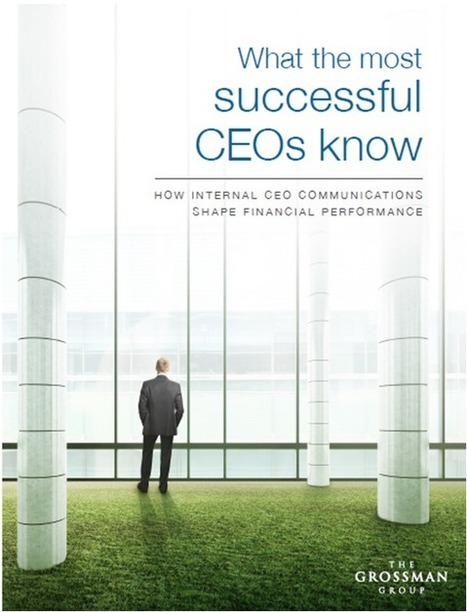










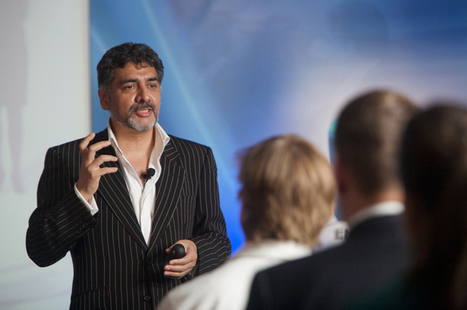





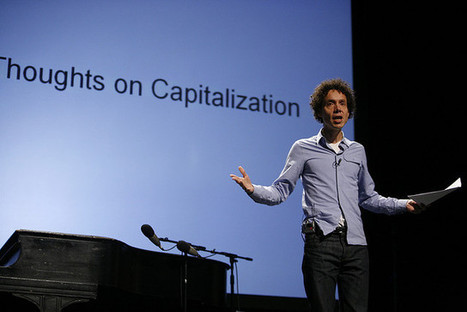
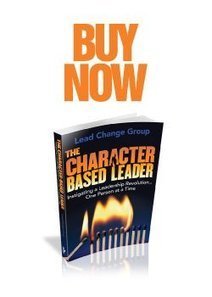




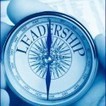







How is the internal communication in your organization?